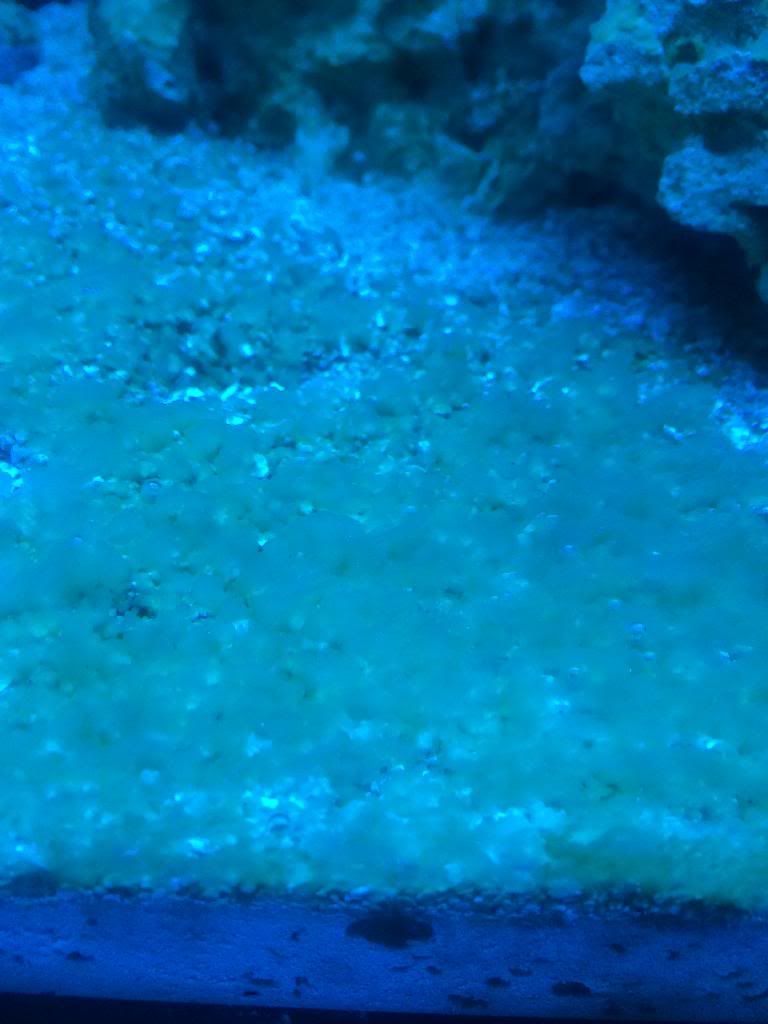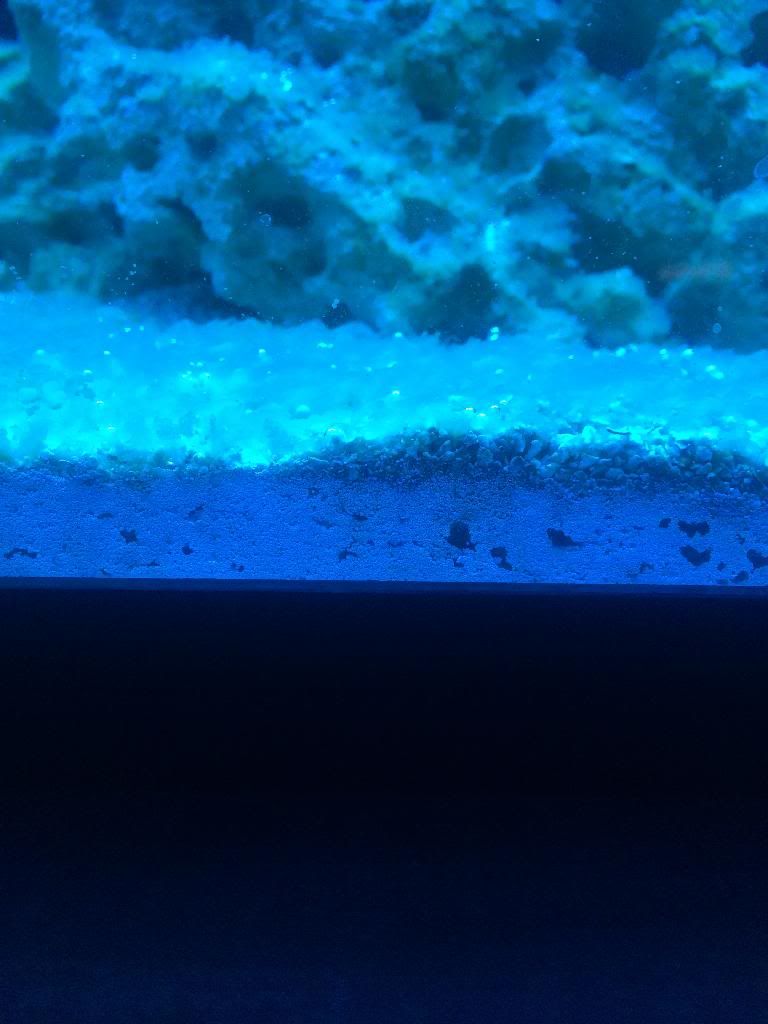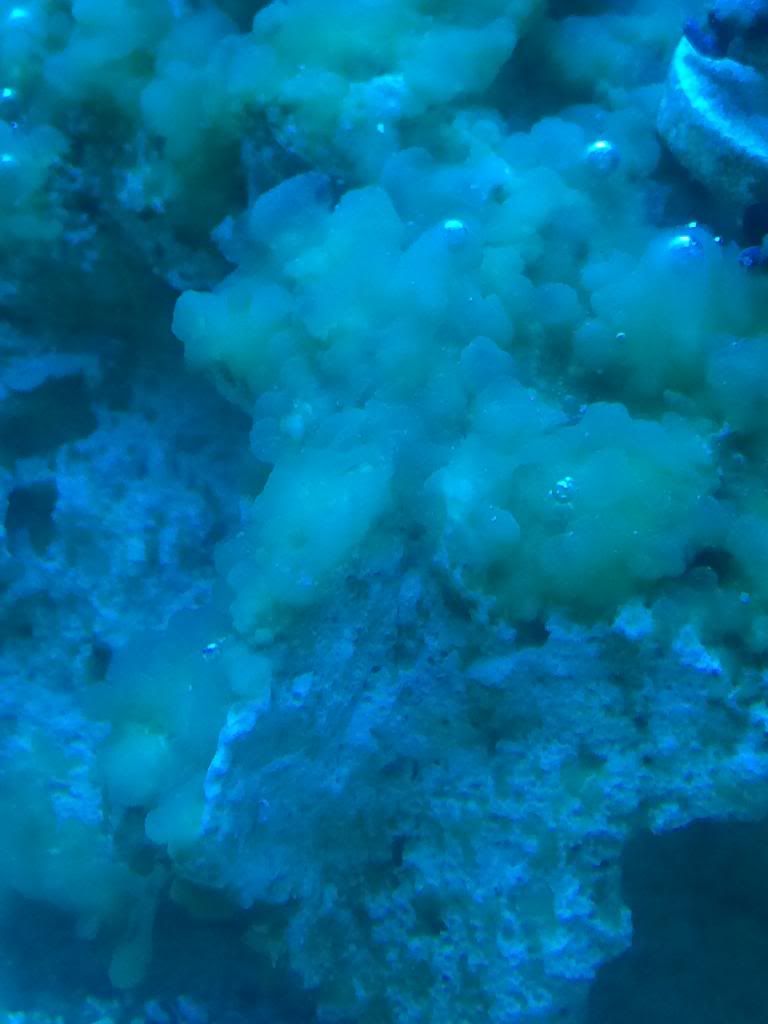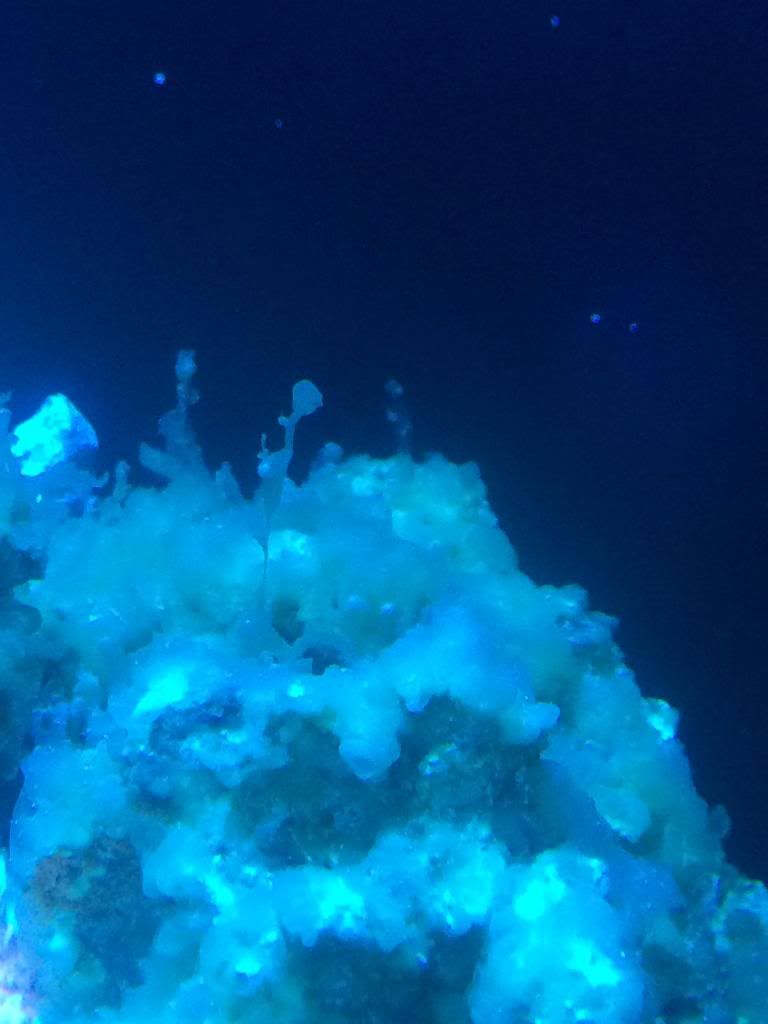You are using an out of date browser. It may not display this or other websites correctly.
You should upgrade or use an alternative browser.
You should upgrade or use an alternative browser.
ID on possible Bacterial bloom
- Thread starter Pat02026
- Start date
Do you carbon dose at all?
Tank is about 4 months old, all parameters are stable. I can suck this stuff right up, it will clog a filter sock in about 2 min when siphoning out, and comes back even worse in a week. There's a ton of flow, 600watts of halide and t-5 lighting, and water changes are small so far since the tank is so young. I run a filter sock almost constantly to try to help catch any of this crap that gets in the water column, and skimming heavily through a pm bullet. I don't think it's Dino's, it's not brown and they don't go away/free float at night. Stuff is nasty and I am unsure what to do next; only thing I've yet to do is lights out, and I think that May be necessary, since it's most dense in direct light areas, and almost non existent in shaded areas (under rock ledges and rock arch). Any thoughts or suggestions?
Do you carbon dose at all?
No, not at all.
Slimy snotty, very transparent, and light in color. Not white, but not brown. It's like a tan/yellow color. I've been trying to resist any sort of intervention, aside from siphoning it out weekly, but it comes back a little stronger every week. The tank was started with all new Marco dry rock, and new sand. Only about 5 pounds of seed rock has been added to the tank, and it's from a clean, well established SPS system.
The tank was started with all new Marco dry rock, and new sand. Only about 5 pounds of seed rock has been added to the tank, and it's from a clean, well established SPS system.
Ahhh, I see. It is due to the dry rocks. The rock is continuously leaching dead material. Those are type of biofilm bacteria and only time will get rid of it. As long as your parameter is in check, the bacteria is doing a good job to cure the rock.
Ahhh, I see. It is due to the dry rocks. The rock is continuously leaching dead material. Those are type of biofilm bacteria and only time will get rid of it. As long as your parameter is in check, the bacteria is doing a good job to cure the rock.
Is this something that should be expected with all dry rock? I'm curious because I just started my tank with about 28lbs of CaribSeas Dry Rock and 3.5lbs of live rock.
I've had similar stuff in my tank for some time. Less severe than yours, but I've had no luck with 'waiting it out' getting rid of it. I run both carbon and gfo and have never had any detectable nitrates. I got lazy for a while with my water changes, so a few weeks ago I started a better routine of water changes every week no matter what. If that doesn't help after 2 months, I was planning on trying one of the 'Dr. Tims' products. Waste Away i believe it's called. But I was hoping to avoid that.
It's also not present on my rocks in the sump that get almost no light, so that may be worth a shot for you. I've done 3 day blackouts and haven't been able to fully eradicate it yet.
It's also not present on my rocks in the sump that get almost no light, so that may be worth a shot for you. I've done 3 day blackouts and haven't been able to fully eradicate it yet.
Nope, what you see in my sig is what the tank consists of, with the exception of filter socks changed out every two-three days, and some passive BRS carbon in the return chamber of the sump. There is NO sign of this stuff in the sump, which receives no light, unless I'm doing something under the stand and have it on.
It's at the point where it's unsightly and not getting better. It's slowly progressed over the last 6-8 weeks to this stage. I really don't want to add anything to the system, so I'm just going to have to wait it out. It doesn't seem to be affecting the corals yet, (few small misc assorted frags to see how things do) and I'm just starting to see some coralline on the overflow, so things are moving in the right direction; the ole lady say the tank looks like $*** and I'm inclined to agree.
I should clarify the "dosing" in the sig is manually adding ca/alk/mg weekly as needed.
I am using kalk in topoff, and ph stays between 8.1-8.4 consistently. Temp is 78-78.5 with little to no deviation between those points.
It's at the point where it's unsightly and not getting better. It's slowly progressed over the last 6-8 weeks to this stage. I really don't want to add anything to the system, so I'm just going to have to wait it out. It doesn't seem to be affecting the corals yet, (few small misc assorted frags to see how things do) and I'm just starting to see some coralline on the overflow, so things are moving in the right direction; the ole lady say the tank looks like $*** and I'm inclined to agree.
I should clarify the "dosing" in the sig is manually adding ca/alk/mg weekly as needed.
I am using kalk in topoff, and ph stays between 8.1-8.4 consistently. Temp is 78-78.5 with little to no deviation between those points.
Last edited:
That is very interesting. As Dong said, i've seen this form on dry rock (same description) but never to that extent. The fact that it isn't growing in shaded areas suggests that the light is somehow fueling it......lights out might be your best bet to see if you can get ahead of it. I would lights out and run carbon, GFO heavy for like 4 days. Then do a good water change after you go lights on to hopefully give it another knockout punch.
That is very interesting. As Dong said, i've seen this form on dry rock (same description) but never to that extent. The fact that it isn't growing in shaded areas suggests that the light is somehow fueling it......lights out might be your best bet to see if you can get ahead of it. I would lights out and run carbon, GFO heavy for like 4 days. Then do a good water change after you go lights on to hopefully give it another knockout punch.
I was thinking along these lines. I'll have to spend a few days moving corals back down to the qt tank, and just go lights out for a week and see what happens. I'm going to let it ride another week or two since my schedule is going to be busy in the next few weeks anyhow and see how it progresses. I've stumbled upon a few instances of similar issues with web searches, but nothing definite and no real cure (especially considering "bacterial bloom" is as close I can get to an I.D.).
That is very interesting. As Dong said, i've seen this form on dry rock (same description) but never to that extent. The fact that it isn't growing in shaded areas suggests that the light is somehow fueling it......lights out might be your best bet to see if you can get ahead of it. I would lights out and run carbon, GFO heavy for like 4 days. Then do a good water change after you go lights on to hopefully give it another knockout punch.
I agree with controling nutrients, but would becareful about aggressively running GFO and Carbon. You could hurt some corals in the process.
Higor
I had something similar happen once in one of my tanks that also was started with dry rock. It was not so severe and eventually died out after 2-3 months. There are many different species of dinoflagellate that can be different shades or brown, and this is what I am suspecting this is. Unfortunately, those are so much harder to starve out using conventional methods. I have found that they seem to be fueled by some compound in the water, either from salt, supplement, or rock, and won't subside until the source is exhausted. What brand of salt are you using? There is one brand of salt mix that I have had more and more frustration with when it comes to fueling dinoflagellates. I was not sure that it was causing the problem at first. I usually don't use it but recently tried it again and, sure enough, had a dino flare up from hell.
+1There are many different species of dinoflagellate that can be different shades or brown, and this is what I am suspecting this is.
I also think it is some kind of dino.
Is this something that should be expected with all dry rock? I'm curious because I just started my tank with about 28lbs of CaribSeas Dry Rock and 3.5lbs of live rock.
No it is not. It is highly depend on where the rock was quarried.
IMO, MarcoRock is the best dry rock available currently and I think it was quarried from land based ancient reef. It may not be the case if the rock was obtained many years ago.
When and where the rocks was bought?
Similar threads
- Replies
- 6
- Views
- 1K
- Replies
- 2
- Views
- 388






